Related Research Articles

Armeria is a genus of flowering plants. These plants are sometimes known as "lady's cushion", "thrift", or "sea pink". The genus counts over a hundred species, mostly native to the Mediterranean, although Armeria maritima is an exception, being distributed along the coasts of the Northern Hemisphere, including Ireland, parts of the United Kingdom such as Cornwall, and the Pembrokeshire Coast National Park in Wales.

Nepenthes villosa, or the villose pitcher-plant, is a tropical pitcher plant endemic to Mount Kinabalu and neighbouring Mount Tambuyukon in northeastern Borneo. It grows at higher elevations than any other Bornean Nepenthes species, occurring at elevations of over 3,200 m (10,500 ft). Nepenthes villosa is characterised by its highly developed and intricate peristome, which distinguishes it from the closely related N. edwardsiana and N. macrophylla.
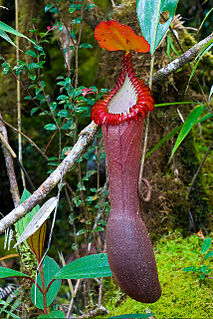
Nepenthes edwardsiana, or the splendid pitcher-plant, is a carnivorous tropical pitcher plant endemic to Mount Kinabalu and neighbouring Mount Tambuyukon in Sabah, Malaysian Borneo. It is considered one of the most spectacular of all Nepenthes, producing some of the largest pitchers and the most highly developed peristome ribs of any species in the genus.

Vicia villosa, known as the hairy vetch, fodder vetch or winter vetch, is a plant native to some of Europe and western Asia. It is a legume, grown as a forage crop, fodder crop, cover crop, and green manure. Although non-native, it occurs in all US states and is considered invasive by some states, such as Alaska, Florida, Georgia, Kansas, Michigan, Minnesota, Oregon, and Washington state — as well as in Japan and some parts of Europe where it is not native. It is also found in most Canadian provinces.
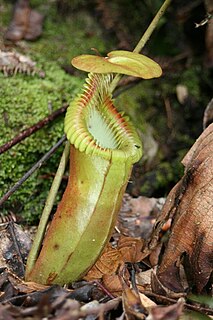
Nepenthes × harryana is the natural hybrid between N. edwardsiana and N. villosa. Its two parent species are very closely related and so N. × harryana, which is intermediate in form, may be difficult to distinguish from either of them.
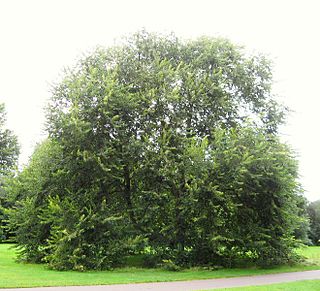
Ulmus villosa, the cherry-bark elm or Marn elm, is one of the more distinctive Asiatic elms, and a species capable of remarkable longevity. It is endemic to the valleys of the Kashmir at elevations of 1200–2500 m but has become increasingly rare owing to its popularity as cattle fodder, and mature trees are now largely restricted to temples and shrines where they are treated as sacred. Some of these trees are believed to be aged over 800 years.

The Chinese nuthatch or snowy-browed nuthatch, is a species of bird in the family Sittidae. It is found in the Russian Far East, China, North Korea, and South Korea.
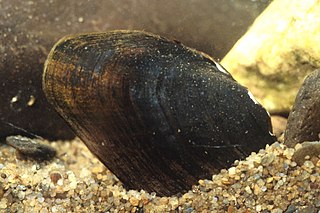
Villosa is a genus of freshwater mussels, aquatic bivalve molluscs in the family Unionidae.

Monardella villosa is a plant in the mint family which is known by the common name coyote mint.

Abronia villosa is a species of sand-verbena known by the common names desert sand-verbena and chaparral sand-verbena. It is in the four o'clock plant family (Nyctaginaceae). It is native to sandy areas in the deserts of the southwestern United States and northern Mexico, associated with creosote-bush and coastal-sage scrub habitats.

The hairy-tailed antsangy is a species of rodent in the family Nesomyidae. It is found only in Madagascar.

Thapsia villosa, commonly known as the villous deadly carrot, is a species of poisonous herbaceous plants in the genus Thapsia. It grows to about 70 to 190 cm in height. It has pinnate hairy leaves with sheath-like petioles. The flowers are yellow in color and borne on compound umbels. They develop into fruits with four wings characteristic of the genus. It is native to southwestern Europe and northwestern Africa surrounding the Mediterranean Sea. The plant was used extensively for traditional medicine since around the 3rd century BC.
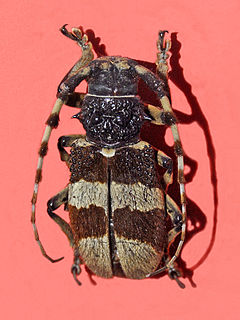
Arctolamia fasciata is a species of flat-faced longhorn beetles belonging to the family Cerambycidae.

Arctolamia is a genus of flat-faced longhorn beetles belonging to the family Cerambycidae.
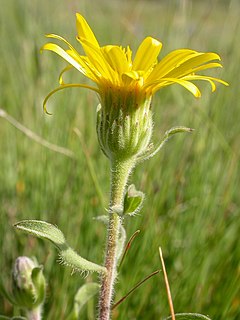
Heterotheca villosa, called the hairy goldenaster, is a North American species of flowering plant in the aster family. It widespread across the central and western parts of the continent, from Ontario west to British Columbia and south as far as Illinois, Kansas, Nuevo León, Guanajuato, and northern Baja California.

Arctolamia fruhstorferi is a species of beetle in the family Cerambycidae. It was described by Per Olof Christopher Aurivillius in 1902. It is known from Vietnam, China and Laos.

Arctolamia luteomaculata is a species of beetle in the family Cerambycidae. It was described by Pu in 1981. It is known from China and Thailand.
Arctolamia strandi is a species of beetle in the family Cerambycidae. It was described by Stephan von Breuning in 1936. It is known from China.
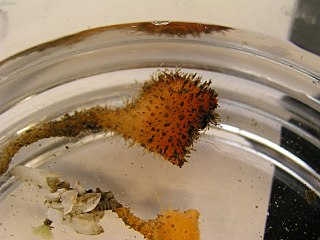
Boltenia villosa is a species of tunicate, a marine invertebrate of the family Pyuridae. Common names include the spiny-headed tunicate, the hairy sea squirt, the stalked hairy sea squirt and the bristly tunicate. This species was first described in 1864 by the American marine biologist William Stimpson who gave it the name Cynthia villosa. It was later transferred to the genus Boltenia. The type locality is Puget Sound, Washington state, United States.
References
- ↑ BioLib.cz - Arctolamia villosa. Retrieved on 8 September 2014.